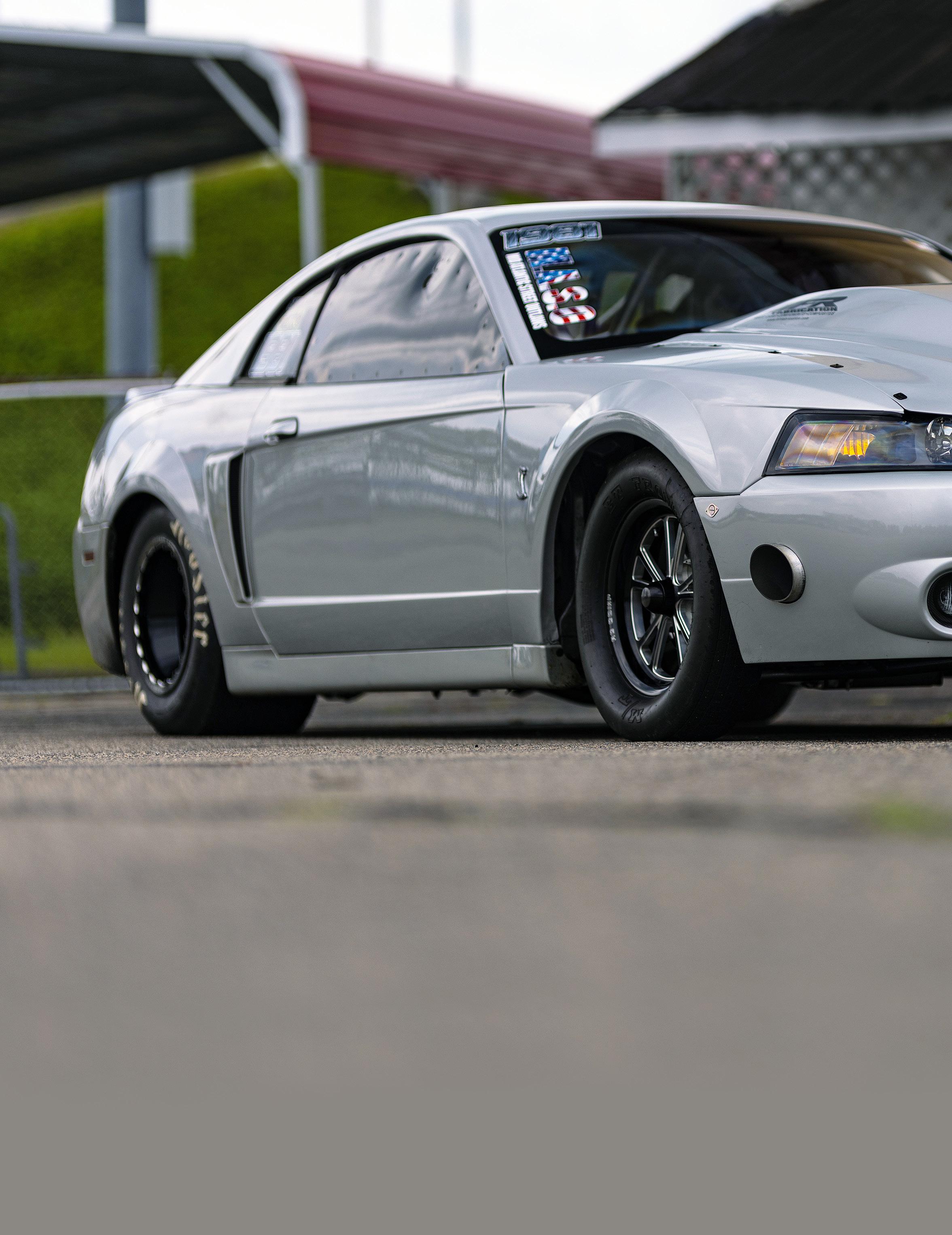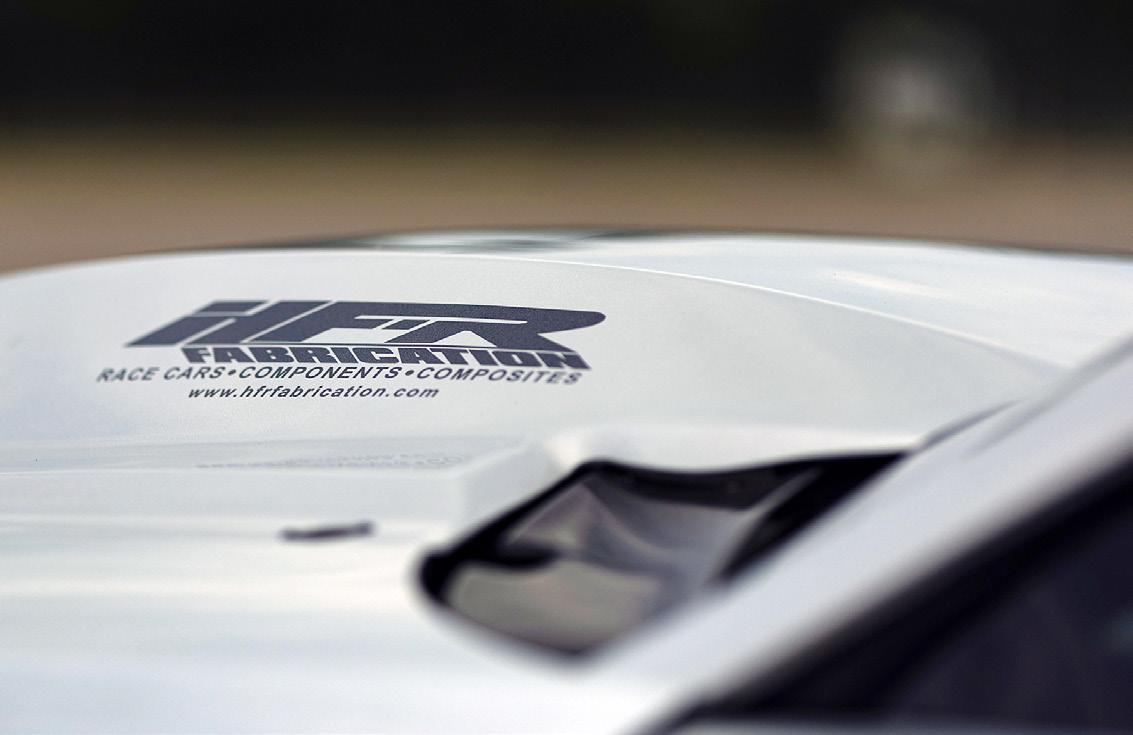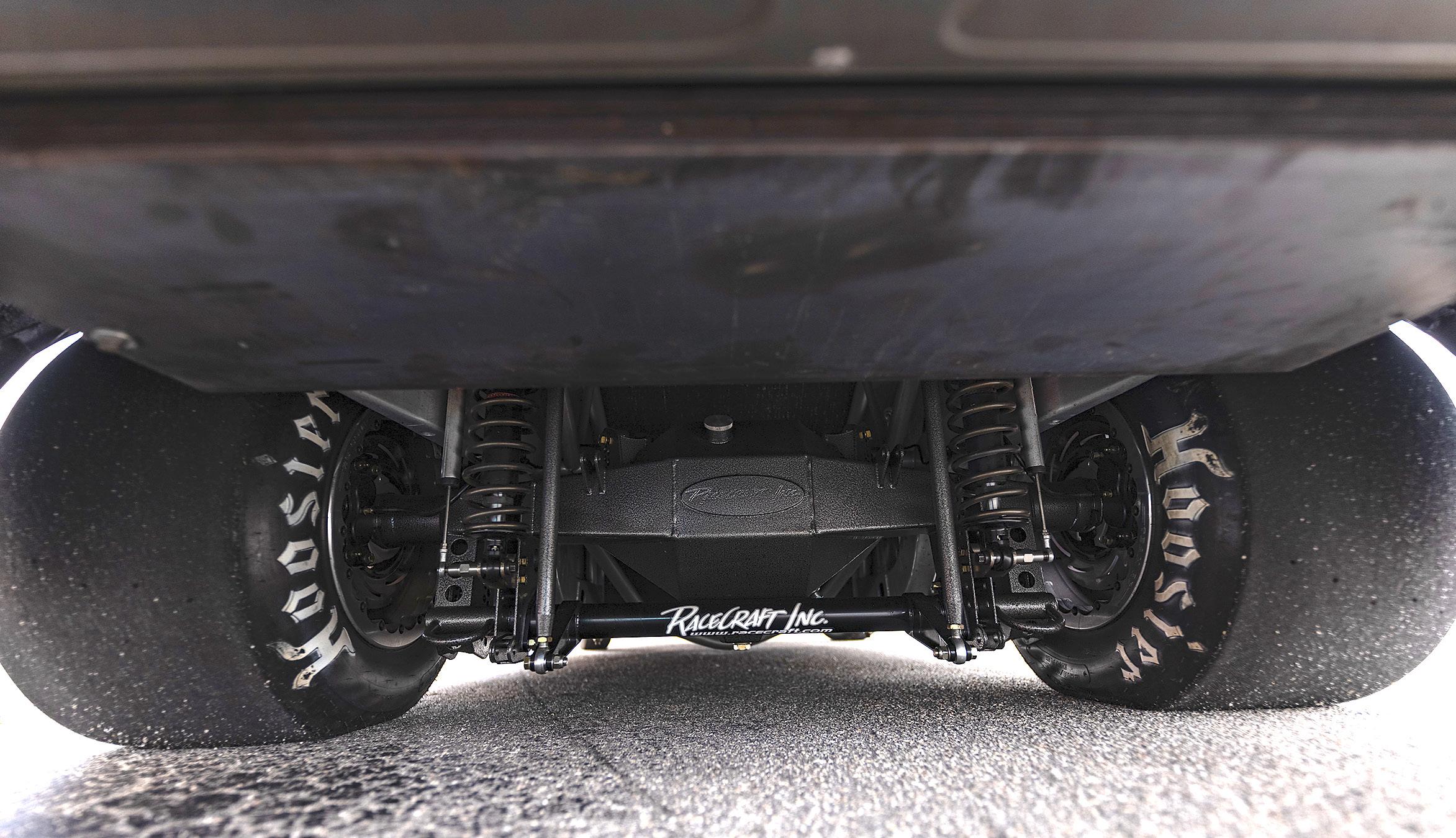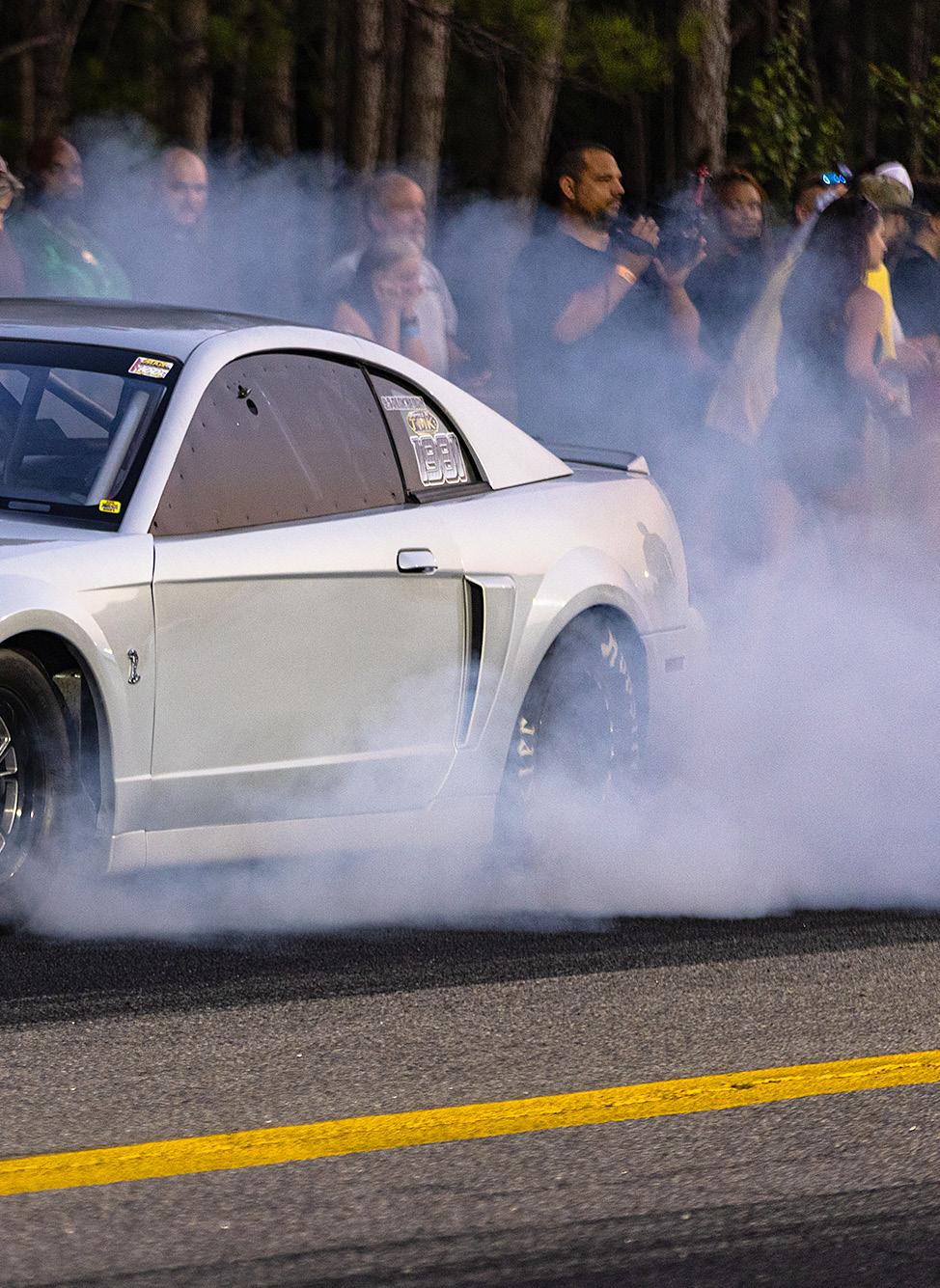


Cobra branding started back in the 1960s and ran with the Mustang into the ‘80s with variants such Cobra Jet or Cobra II along the way. Then there are the Shelby Cobra offerings which are some of the most rare (and powerful) to ever bare the Cobra name.
It wasn’t until Ford started an extension of that with the release of the Special Vehicle Team or “SVT” lineup that lead to the rise of the later model Cobras. The 1993 Mustang Cobra in the Fox Body platform led to the 1994-1998 SN95 body style before ending with the New Edge 1999-2004 Mustangs. Ford might have just saved the best for last with the 2003-2004 “Terminator” Cobra that gained fame for being the “killer of the streets” during its production run. At a tick above Mustang GT pricing, the 4.6 liter 2v overhead cam motor got replaced by an Eaton supercharged 4.6 4v beast making 400hp. The number seems weak now, but the only thing in the ballpark at that time was Chevy’s C5 Corvette that also made 400hp, but at a considerably higher cost. Fast forward almost 20 years, and the Terminator still holds the hearts of many Ford Mustang fans and collectors.

When I spotted Tommy Bauerlien and Eddie Deaver’s clean 2003 model sitting in the pits during a recent event, I couldn’t help but notice the missing Modular supercharged powerplant. Of course, my first thought was that they replaced it with an LS-based motor, since that’s the thing to do with Mustangs these days. Instead, not only did they keep the Ford power alive in the Cobra, but they chose the original small block Ford engine platform, too. I soon learned that this was an authentic Cobra with just 27,000 original miles on it before it’s transformation.
This is the real deal
an original 27,000 mile SVT Cobra. The car sports carbon doors, hood and frontend, Optic Armor windows and was repainted by Roger Levering in the original silver color.



Tommy has had a few different bracket and small tire radial cars over the years but actually got his feet wet mud truck racing. “When we started heads up racing, we raced Real Street with a nitrous fed small block Ford in another Fox Body and after reaching the limits of the chassis and combo, the opportunity to purchase this Cobra came about,” Bauerlien said.

It turns out that they actually purchased the shell from an owner that lost interest in the build. However, unlike so many “I bought it and found a bunch of prob-
lems when I got it apart” scenarios, this car was just the opposite – the Cobra came as a solid build, already equipped with a long list of race-winning parts. Once the factory shell was at HFR Fabrication, a 25.3 6.50 certified cage was installed for strength and safety. The floor pan and firewall stayed OEM, however, the transmission tunnel required modifications for the incoming auto that would replace the factory T-56 six-speed. The complete rear independent suspension got the ax, and rear wheeltubs were installed. “Henry and his guys




In the interest of weight savings and creating a clutter-free work environment, the Cobra interior is clean and simple with a 25.3 cage, Racetech seat, ice tank, M&M shifter and Holley display.













finished the car from barely a roller to a work of art,” Tommy added.



Much of the body panels were changed, as well. The factory doors got a carbon treatment and the heavy original glass was replaced with Optic Armor windows by Motor City. A onepiece nose and tubing structure up front is a sure-fire way of saving weight and making things far more accessible; and carbon work from Motor City finishes things off. A Feather Carbon cowl hood completes the body lightening mods and Tommy

Henry and his guys finished the car from barely a roller to a work of art...
An owner-built 438-inch small block Ford started life with a Dart Iron Eagle block. A Callies Magnum 4” stroke crank spins GRP 1201 series rods and Diamond 4.175 bore pistons. 20 degree heads are fitted with Jesel shaft rockers and a Holley Hi-Ram with Wilson 105mm throttle body sits on a 1.5-inch spacer. Fuel is supplied by a Kinsler 750 pump and Holley 160 injectors.







did the work to smooth out the shock towers and firewall himself.
A solid chassis deserves a well-designed suspension and that’s precisely what this Terminator has. With the factory independent rear gone, a tried and true setup for the Mustang was created using Racecraft upper and lower arms with an anti-roll bar for stability and Santhuff canister shocks. A Racecraft fabricated 9-inch rear is stuffed with a Mark Williams through-bolt aluminum case, 40 spline axles and spool. Santhuff and Racecraft goodies can also be found up front, with spindle mount struts, Racecraft arms and K-member. Lightweight Strange drag brakes reside on all four corners and the car sits on RC Components Comp 5 wheels, 15-inch skinnies in the front, and 15x10s out back running on 28x10.5 tires. Finally, Roger Levering put the finishing touches on the car, repainting it back to the original SVT Silver color.

In 1999, Ford did away with its conventional “cam in block” small block Ford in favor of the more complex overhead cam modular motors. While the factory Cobra mod motor is quite capable of taking a good helping of aftermarket parts, Bauerlien chose to go back to Ford’s roots with a traditional small block build.
Mark Small Machine prepped the Dart Iron Eagle block for Tommy to assemble. A Callies Magnum 4 inch stroker crank spins GRP 1201 series

A Racecraft fabricated 9-inch is stuffed with a Mark Williams center section, spool and 40 spline axles and is suspended by parts from Racecraft and Santhuff.



rods with 4.175 bore Diamond Pistons slugs to top it off. A custom ground cam from Vincent Performance completes the short block and, with boost in mind, Tommy sourced a custom ported set of Brodix 20-degree heads by Kuntz to stud into place. Topnotch parts like Jesel rockers, lifters, and Manton pushrods were added to the mix and a Holley Hi-Ram intake with 1.5-inch spacer sits atop the small block. Fuel delivery comes via a Kinsler 750 fuel pump on a custom KFM cam mount. Q16 flows through Holley 160lb injectors, and their coils help light the fire. Lubrication gets rather complex, but for a good reason. For longevity, a Peterson R4 4
stage dry-sump oiling system completes the assembly. There are no turbos here; and while a Cobra does come with a Roots style supercharger, it’s not like the centrifugal F1A91 ProCharger center-mounted on a Supercharger Store gear drive hanging off the front of this mill.
A 4,000hp-capable intercooler and interior-mounted Shear Fab ice tank keep intake air temperatures in check and Tommy has all the information and control at his fingertips with the 7-inch display from Holley. Their Dominator stand-alone EFI system runs the show fed by a long list of Rife sensors to ensure as much information
A ProCharger F1A91 blower is coupled with a Supercharger Store gear drive.

Tommy Bauerlien & Eddie Deavers’ Supercharged
2003 Ford Mustang SVT Cobra
Body & Paint:
Repainted by Roger Levering in original color. Carbon doors and frontend, Optic Armor windows.
Chassis & Suspension/Modifications:


Full custom chassis / cage by HFR Fabrication. Racecraft reared & suspension components, Santhuff shocks out back and struts up front.
Engine: 438ci with SBF Dart Iron Eagle block. Rotating assembly consists of a Callies Magnum crank 4” stroke, Diamond pistons 4.175 bore and GRP 1201 series rods. Cylinder heads are 20 degree Kuntz/Brodix with Jesel shaft rockers topped by Harshman Machine billet valve covers. Star vacuum pump and Peterson 4 stage dry sump oiling system.
Induction & Fuel Delivery: Kinsler 750 pump, Holley 160 injectors, Holley Hi-Ram intake and Wilson 105 throttle body.
Electronics: Holley EFI Dominator system with Rife sensors.
Power Adder: ProCharger F1A91 coupled with a Supercharger Store gear drive.
Transmission: Toms Auto Powerglide / Hughes Gen 2 bolt together Pro SSX 9.5” converter.
Rearend: Racecraft fabricated 9-inch with Mark Williams center section, spool and 40 spline axles. Brakes: Strange discs on all 4 corners. Tires & Wheels: RC Components front and rear –28x10.5 rear tire Interior: Racetech seat, M&M shifter, Holley dash.
Thanks To: Eddie Deavers (part owner) and Henry Fryfogle of HFR Fabrication.





as possible reaches driver and tuner.


Eddie Grimes did a fantastic job fabbing up the intake tubes and headers, and a trick set of custom billet valve covers add a finishing touch of bling to the package. The Cobra’s manual transmission replacement is a trusty Powerglide built by Tommy, staring with an ATI case, a Sunnex 1.58 gearset and billet input shaft. A Hughes Nissan Gen 2 bolt-together converter spins between the motor and transmission.
The interior is clean and simple with a paint-matched cage, a Feather Lite dash with Holley display, black carpet, and a seat. An M&M shifter sits next to the intercooler ice tank that takes
up the space where a passenger would once sit, and custom carbon panels finish off the rear of the cockpit.
Originally, the car was purpose-built to run Ultra Street however, plans do change. “We were planning to compete in Ultra Street with this spec built chassis but we have had a lot of fun with the challenge of No Prep racing,” Tommy added.


So, while they’re just getting a handle the capabilities of the Cobra in the No-Prep scene (and we can’t tell what those capabilities are because it’s a no-time car), we can tell you one thing, there’s little doubt that this Cobra will live up to its “Terminator” name.

